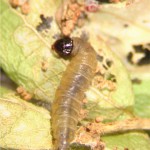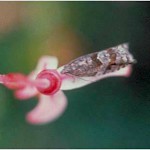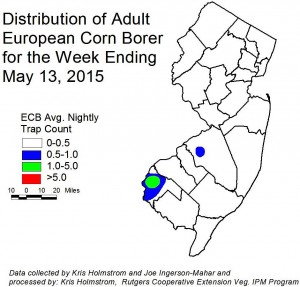The following insect pests bear special mention for early-season scouting in cranberry bogs.
Click images to enlarge.
Blackheaded Fireworm
Blackheaded fireworm eggs overwinter on the bed and usually hatch by around mid-May. It is important to catch the first generation, if possible, because the second generation occurs during bloom and is typically much more destructive. Blackheaded fireworm larvae can be detected by sweep net sampling and it is good idea to look along the edges of bed where vines first begin to grow.
Blackheaded fireworm is much easier to control if detected during the early part of the season.



